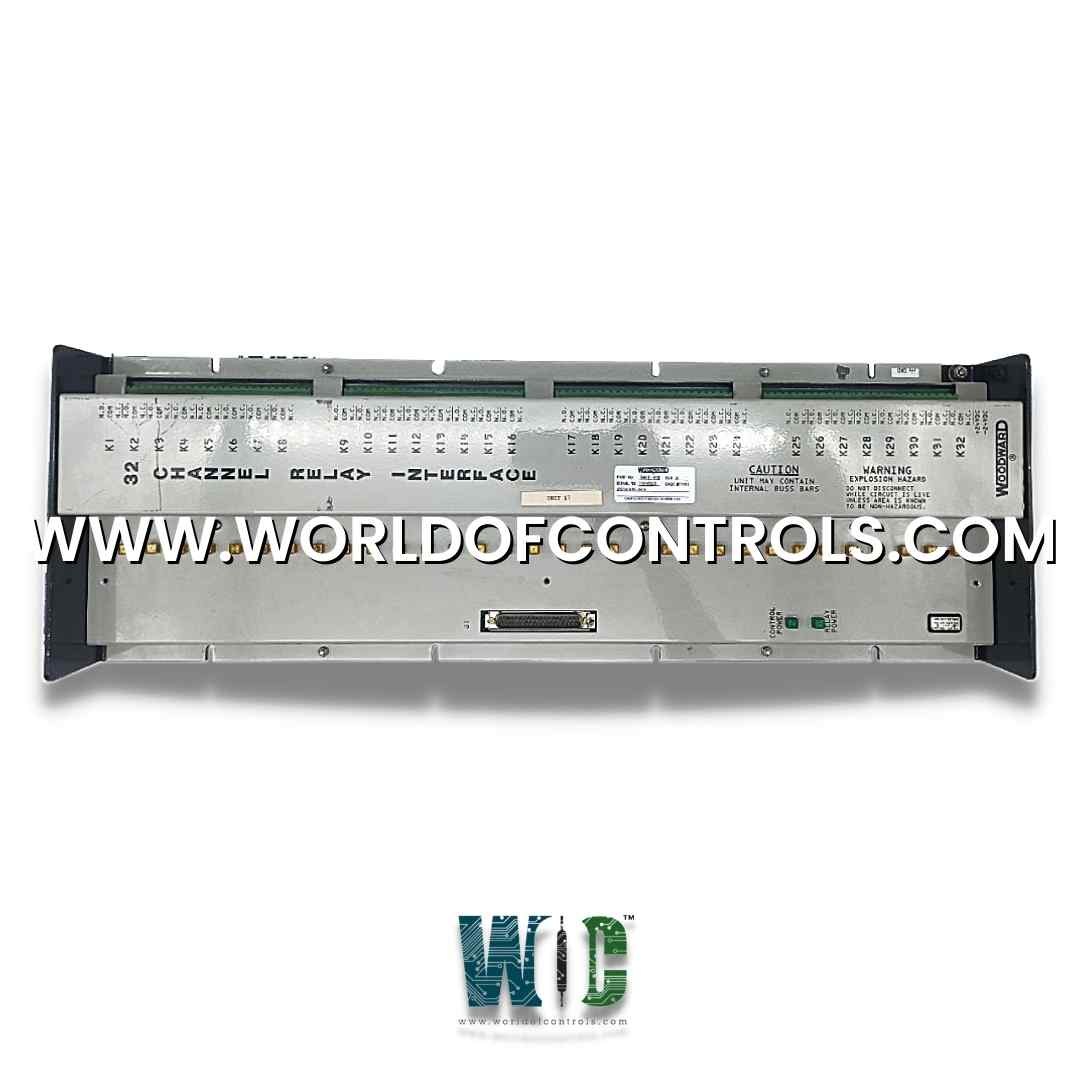
World Of Controls understands the criticality of your requirement and works towards reducing the lead time as much as possible.
5441-413 - Relay Interface Module is available in stock which ships the same day.
5441-413 - Relay Interface Module comes in UNUSED as well as REBUILT condition.
To avail our best deals for 5441-413 - Relay Interface Module, contact us and we will get back to you within 24 hours.
Part Number: 5441-413
Manufacturer: Woodward
Product type: Field Terminal Module
Repair: 3-7 Day
Availability: In Stock
Country of Manufacture: United States (USA)
5441-413 is a Relay Interface Module developed by Woodward. It is a 32 Channel Relay Interface Module, used to control electrical loads by providing a means to switch them on or off. It typically consists of multiple relays arranged in a module, along with necessary circuitry and connectors for interfacing with other systems. It act as an interface between a control system, such as a microcontroller or a programmable logic controller (PLC), and the loads that need to be controlled. Each channel of the module corresponds to a separate relay, allowing independent control of multiple electrical devices.
World of Controls has the most comprehensive selection of GE and Woodward components. Our professionals are available to help you with your requirements at any time. If you require any additional information, please contact WOC immediately.
What is 5441-413?
It is a Field Terminal Module developed by Woodward.
Can the relays in the module handle different voltages and currents?
Yes, the relays in the module can be designed to handle different voltages and currents, allowing for control of various types of loads with different electrical requirements.
What is the purpose of the VERSAmodule Eurocard (VME) bus standard in the control chassis?
The modules in the MicroNet TMR control chassis use the VERSAmodule Eurocard (VME) bus standard for connector specification and data transfer. This standard ensures compatibility and facilitates communication between the modules.
How are logic, power, and I/O connections established within the control chassis?
Logic and power connections between kernels and slots are made through an etched-circuit motherboard. I/O connections are established by running cables from the front of the boards to field termination modules (FTMs) in the cabinet, which act as interfaces between the control system and field devices or sensors.